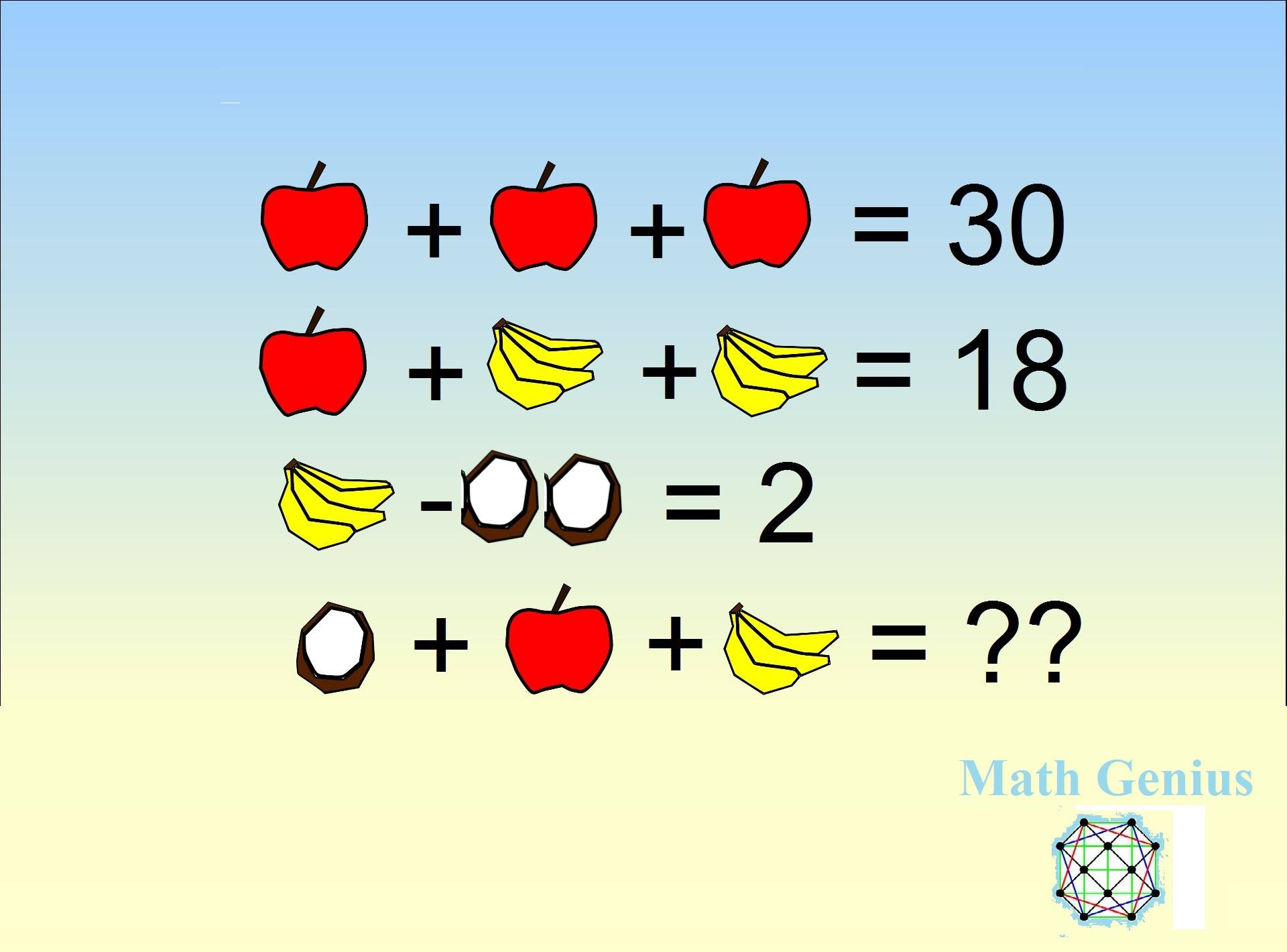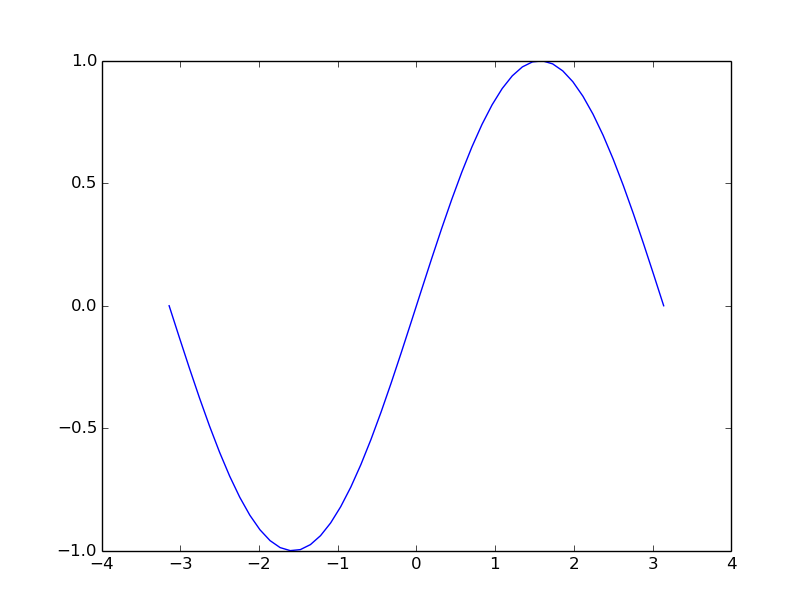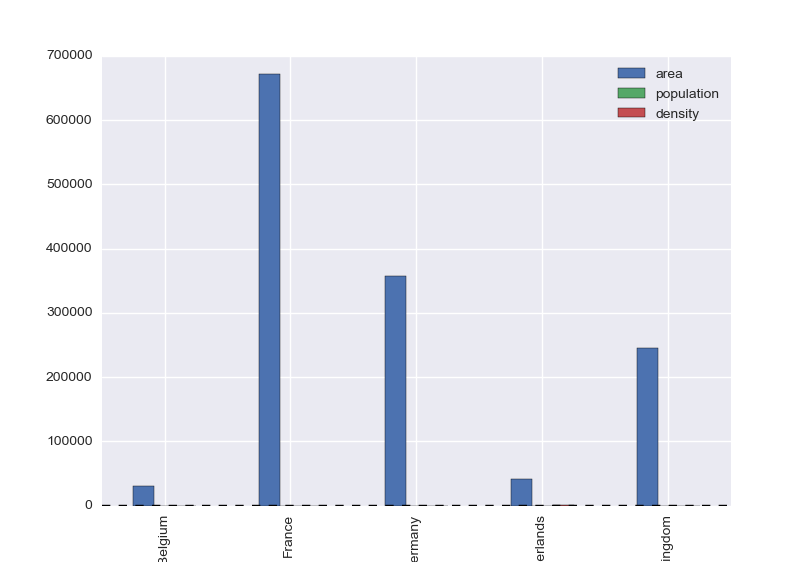External libraries
Contents
External libraries#
#
BB1000 Programming in Python KTH
layout: false
Learning outcomes:
numpy
pandas
matplotlib
What can you do with Python libraries#
This year’s Nobel Prize in economics was awarded to a Python convert

https://qz.com/1417145/economics-nobel-laureate-paul-romer-is-a-python-programming-convert/
Instead of using Mathematica, Romer discovered that he could use a Jupyter notebook for sharing his research. Jupyter notebooks are web applications that allow programmers and researchers to share documents that include code, charts, equations, and data. Jupyter notebooks allow for code written in dozens of programming languages. For his research, Romer used Python—the most popular language for data science and statistics.
What can you do with Python libraries#
Take a picture of a black hole

https://doi.org/10.3847/2041-8213/ab0e85
Software: DiFX (Deller et al. 2011), CALC, PolConvert (Martí-Vidal et al. 2016), HOPS (Whitney et al. 2004), CASA (McMullin et al. 2007), AIPS (Greisen 2003), ParselTongue (Kettenis et al. 2006), GNU Parallel (Tange 2011), GILDAS, eht-imaging (Chael et al. 2016, 2018), Numpy (van der Walt et al. 2011), Scipy (Jones et al. 2001), Pandas (McKinney 2010), Astropy (The Astropy Collaboration et al. 2013, 2018), Jupyter (Kluyver et al. 2016), Matplotlib (Hunter 2007).
What is a library?#
A file
A directory
Builtin
Standard library (requires import)
External libraries (requires install)
Builtins#
>>> dir(__builtins__)
[
...
'abs', 'all', 'a
ny', 'ascii', 'bin', 'bool', 'bytearray', 'bytes', 'callable', 'chr', 'classmetho
d', 'compile', 'complex', 'copyright', 'credits', 'delattr', 'dict', 'dir', 'divm
od', 'enumerate', 'eval', 'exec', 'exit', 'filter', 'float', 'format', 'frozenset
', 'getattr', 'globals', 'hasattr', 'hash', 'help', 'hex', 'id', 'input', 'int',
'isinstance', 'issubclass', 'iter', 'len', 'license', 'list', 'locals', 'map', 'm
ax', 'memoryview', 'min', 'next', 'object', 'oct', 'open', 'ord', 'pow', 'print',
'property', 'quit', 'range', 'repr', 'reversed', 'round', 'set', 'setattr', 'sli
ce', 'sorted', 'staticmethod', 'str', 'sum', 'super', 'tuple', 'type', 'vars', 'z
ip']
Standard library#
Included in all distributions, but requires an import statement for access
>>> import math
>>> math.pi
3.141592653589793
https://docs.python.org/3/library/


 ---
---
External Python libraries#
NumPy: ‘Numerical python’, linear algebra, https://www.numpy.org/
Pandas: High-level library for tabular data, https://pandas.pydata.org/
Matplotlib: fundamental plotting module, https://matplotlib.org/
Are you a math genius?#

First three rows a linear system of equations
Identify the coefficient matrix and right-hand side
Last line represents an expression of the solutions
$$
=
$$ $$ a + 3b + c = ? $$
Linear Algebra in Python: NumPy#
Libraries provided by
numpyprovide computational speeds close to compiled languagesGenerally written in C
From a user perspective they are imported as any python module
http://www.numpy.org
Creating arrays#
one- and two-dimensional
>>> import numpy
>>> a = numpy.zeros(3)
>>> a
array([0., 0., 0.])
>>> b = numpy.zeros((3, 3))
>>> b
array([[0., 0., 0.],
[0., 0., 0.],
[0., 0., 0.]])
Copying arrays#
>>> x = numpy.zeros(2)
>>> y = x
>>> x[0] = 1
>>> x
array([1., 0.])
>>> y
array([1., 0.])
Note that assignment (like lists) here is by reference
>>> x is y
True
Numpy array copy method
>>> y = x.copy()
>>> x is y
False
Filling arrays#
linspace returns an array with sequence data
>>> numpy.linspace(0,1,6)
array([0. , 0.2, 0.4, 0.6, 0.8, 1. ])
arange is a similar function
>>> numpy.arange(0, 1, 0.2)
array([0. , 0.2, 0.4, 0.6, 0.8])
Arrays from list objects#
>>> la=[1., 2., 3.]
>>> a=numpy.array(la)
>>> a
array([1., 2., 3.])
>>> lb=[4., 5., 6.]
>>> ab=numpy.array([la,lb])
>>> ab
array([[1., 2., 3.],
[4., 5., 6.]])
Arrays from file data:#
Using
numpy.loadtxt
#a.dat
1 2 3
4 5 6
>>> a = numpy.loadtxt('a.dat')
>>> a
array([[1., 2., 3.],
[4., 5., 6.]])
If you have a text file with only numerical data arranged as a matrix: all rows have the same number of elements
Reshaping#
by changing the shape attribute
>>> ab.shape
(2, 3)
>>> ab = ab.reshape((6,))
>>> ab.shape
(6,)
with the reshape method
>>> ba = ab.reshape((3, 2))
>>> ba
array([[1., 2.],
[3., 4.],
[5., 6.]])
Views of same data#
ab and ba are different objects but represent different views of the same data
>>> ab[0] = 0
>>> ab
array([0., 2., 3., 4., 5., 6.])
>>> ba
array([[0., 2.],
[3., 4.],
[5., 6.]])
Array indexing and slicing#
like lists
a[2: 4]is an array slice with elementsa[2]anda[3]a[n: m]has sizem-na[-1]is the last element ofaa[:]are all elements ofa
Matrix operations#
From mathematics:
\[C_{ij} = \sum_k A_{ik}B_{kj}\]
explicit looping (slow):
import time
import numpy
n = 256
a = numpy.ones((n, n))
b = numpy.ones((n, n))
c = numpy.zeros((n, n))
t1 = time.time()
for i in range(n):
for j in range(n):
for k in range(n):
c[i, j] += a[i, k]*b[k, j]
t2 = time.time()
print("Loop timing", t2-t1)
using numpy
import time
import numpy
n = 256
a = numpy.ones((n, n))
b = numpy.ones((n, n))
t1 = time.clock()
c = a @ b
t2 = time.clock()
print("dot timing", t2-t1)
@ is a matrix multiplication operator, same as
c = numpy.dot(a, b)
More vector operations#
Scalar multiplication
a * 2Scalar addition
a + 2Power (elementwise)
a**2
Note that for objects of ndarray type, multiplication means elementwise multplication and not matrix multiplication
Vectorized elementary functions#
>>> v = numpy.arange(0, 1, .2)
>>> v
array([0. , 0.2, 0.4, 0.6, 0.8])
–
>>> numpy.cos(v)
array([1. , 0.98006658, 0.92106099, 0.82533561, 0.69670671])
–
>>> numpy.sqrt(v)
array([0. , 0.4472136 , 0.63245553, 0.77459667, 0.89442719])
–
>>> numpy.log(v)
...
array([ -inf, -1.60943791, -0.91629073, -0.51082562, -0.22314355])
More linear algebra#
Solve a linear system of equations $$Ax = b$$
–
x = numpy.linalg.solve(A, b)
–
Determinant of a matrix
$$det(A)$$
–
x = numpy.linalg.det(A)
Inverse of a matrix $$A^{-1}$$
–
x = numpy.linalg.inverse(A)
–
Eigenvalues of a matrix
$$Ax = x\lambda$$
–
x, l = numpy.linalg.eig(A)
References#
http://www.numpy.org
http://www.scipy-lectures.org/intro/numpy/index.html
Videos: https://pyvideo.org/search.html?q=numpy
Matplotlib#
The standard 2D-plotting library in Python
Production-quality graphs
Interactive and non-interactive use
Many output formats
Flexible and customizable
First example#
The absolute minimum you need to know#
You have a set of points (x,y) on file
data.txt
-3.141593 -0.000000
-3.013364 -0.127877
-2.885136 -0.253655
...
3.141593 0.000000
–
How do you get to this

Next#
Import the plotting library
>>> import matplotlib.pyplot as plt
>>> import numpy as np
–
Load the data from file
>>> data = np.loadtxt('data.txt')
–
Call the
plotfunction
>>> plt.plot(data[:, 0], data[:, 1])
–
Show the result
>>> plt.show()
Next?#
Refinement#
Change color, linestyle, linewidth –
Change window size (ylim) –
Change xticks –
Set title –
Multi-line plots –
Legends
In practice#
How do you do when need a particlar type of figure?
Go to the matplotlib gallery: http://matplotlib.org/gallery
Try some exercises at http://scipy-lectures.github.io/intro/matplotlib/matplotlib.html#other-types-of-plots-examples-and-exercises
See also: https://realpython.com/python-matplotlib-guide/
The pandas module#
Setup:
>>> import pandas as pd
>>> import numpy as np
>>> import matplotlib.pyplot as plt
Two main data structures
Series
Data frames
Series#
One-dimensional labeled data
>>> s = pd.Series([0.1, 0.2, 0.3, 0.4])
>>> print(s)
0 0.1
1 0.2
2 0.3
3 0.4
dtype: float64
–
>>> s.index
RangeIndex(start=0, stop=4, step=1)
–
>>> s.values
array([0.1, 0.2, 0.3, 0.4])
indices can be labels (like a dict with order)
>>> s = pd.Series(np.arange(4), index=['a', 'b', 'c', 'd'])
>>> print(s)
a 0
b 1
c 2
d 3
dtype: int64
>>> print(s['d'])
3
>>>
–
Initialize with dict
>>> s = pd.Series({'a': 1, 'b': 2, 'c': 3, 'd': 4})
>>> print(s)
a 1
b 2
c 3
d 4
dtype: int64
–
Indexing as a dict
>>> print(s['a'])
1
Elementwise operations
>>> s * 100
a 100
b 200
c 300
d 400
dtype: int64
>>>
–
Slicing
>>> s['b': 'c']
b 2
c 3
dtype: int64
>>>
List indexing
>>> print(s[['b', 'c']])
b 2
c 3
dtype: int64
>>>
–
Bool indexing
>>> print(s[s>2])
c 3
d 4
dtype: int64
>>>
–
Other operations
>>> s.mean()
2.5
>>>
Alignment on indices
>>> s['a':'b'] + s['b':'c']
a NaN
b 4.0
c NaN
dtype: float64
DataFrames#
Tabular data structure (like spreadsheet, sql table)
Multiple series with common index
>>> data = {'country': ['Belgium', 'France', 'Germany', 'Netherlands', 'United Kingdom'],
... 'population': [11.3, 64.3, 81.3, 16.9, 64.9],
... 'area': [30510, 671308, 357050, 41526, 244820],
... 'capital': ['Brussels', 'Paris', 'Berlin', 'Amsterdam', 'London']}
>>>
–
>>> countries = pd.DataFrame(data)
>>> countries
country population area capital
0 Belgium 11.3 30510 Brussels
1 France 64.3 671308 Paris
2 Germany 81.3 357050 Berlin
3 Netherlands 16.9 41526 Amsterdam
4 United Kingdom 64.9 244820 London
Attributes: index, columns, dtypes, values
>>> countries.index
RangeIndex(start=0, stop=5, step=1)
–
>>> countries.columns
Index(['country', 'population', 'area', 'capital'], dtype='object')
–
>>> countries.dtypes
country object
population float64
area int64
capital object
dtype: object
>>>
–
>>> countries.values
array([['Belgium', 11.3, 30510, 'Brussels'],
['France', 64.3, 671308, 'Paris'],
['Germany', 81.3, 357050, 'Berlin'],
['Netherlands', 16.9, 41526, 'Amsterdam'],
['United Kingdom', 64.9, 244820, 'London']], dtype=object)
Info
>>> countries.info()
<class 'pandas.core.frame.DataFrame'>
RangeIndex: 5 entries, 0 to 4
Data columns (total 4 columns):
# Column Non-Null Count Dtype
--- ------ -------------- -----
0 country 5 non-null object
1 population 5 non-null float64
2 area 5 non-null int64
3 capital 5 non-null object
dtypes: float64(1), int64(1), object(2)
memory usage: 288.0+ bytes
RangeInde: 5 entries, 0 to 4
Data columns (total 4 columns):
area 5 non-null int64
capital 5 non-null object
country 5 non-null object
population 5 non-null float64
dtypes: float64(1), int64(1), object(2)
memory usage: 200.0 bytes
>>>
Set a column as index
>>> countries
country population area capital
0 Belgium 11.3 30510 Brussels
1 France 64.3 671308 Paris
2 Germany 81.3 357050 Berlin
3 Netherlands 16.9 41526 Amsterdam
4 United Kingdom 64.9 244820 London
–
>>> countries = countries.set_index('country')
–
>>> countries
population area capital
country
Belgium 11.3 30510 Brussels
France 64.3 671308 Paris
Germany 81.3 357050 Berlin
Netherlands 16.9 41526 Amsterdam
United Kingdom 64.9 244820 London
Access a single series in a table
>>> print(countries['area'])
country
Belgium 30510
France 671308
Germany 357050
Netherlands 41526
United Kingdom 244820
Name: area, dtype: int64
–
>>> print(countries['capital']['France'])
Paris
–
Arithmetic expressions (population density)
>>> print(countries['population']/countries['area']*10**6)
country
Belgium 370.370370
France 95.783158
Germany 227.699202
Netherlands 406.973944
United Kingdom 265.092721
dtype: float64
>>>
Add new column
>>> countries['density'] = countries['population']/countries['area']*10**6
>>> countries
population area capital density
country
Belgium 11.3 30510 Brussels 370.370370
France 64.3 671308 Paris 95.783158
Germany 81.3 357050 Berlin 227.699202
Netherlands 16.9 41526 Amsterdam 406.973944
United Kingdom 64.9 244820 London 265.092721
–
Filter data
>>> countries[countries['density'] > 300]
population area capital density
country
Belgium 11.3 30510 Brussels 370.370370
Netherlands 16.9 41526 Amsterdam 406.973944
Sort data
>>> countries.sort_values('density', ascending=False)
population area capital density
country
Netherlands 16.9 41526 Amsterdam 406.973944
Belgium 11.3 30510 Brussels 370.370370
United Kingdom 64.9 244820 London 265.092721
Germany 81.3 357050 Berlin 227.699202
France 64.3 671308 Paris 95.783158
–
Statistics
>>> countries.describe()
population area density
count 5.000000 5.000000 5.000000
mean 47.740000 269042.800000 273.183879
std 31.519645 264012.827994 123.440607
min 11.300000 30510.000000 95.783158
25% 16.900000 41526.000000 227.699202
50% 64.300000 244820.000000 265.092721
75% 64.900000 357050.000000 370.370370
max 81.300000 671308.000000 406.973944
Plotting
>>> countries.plot()

Plotting barchart
>>> countries.plot(kind='bar')

Features#
like numpy arrays with labels
supported import/export formats: CSV, SQL, Excel…
support for missing data
support for heterogeneous data
merging data
reshaping data
easy plotting
